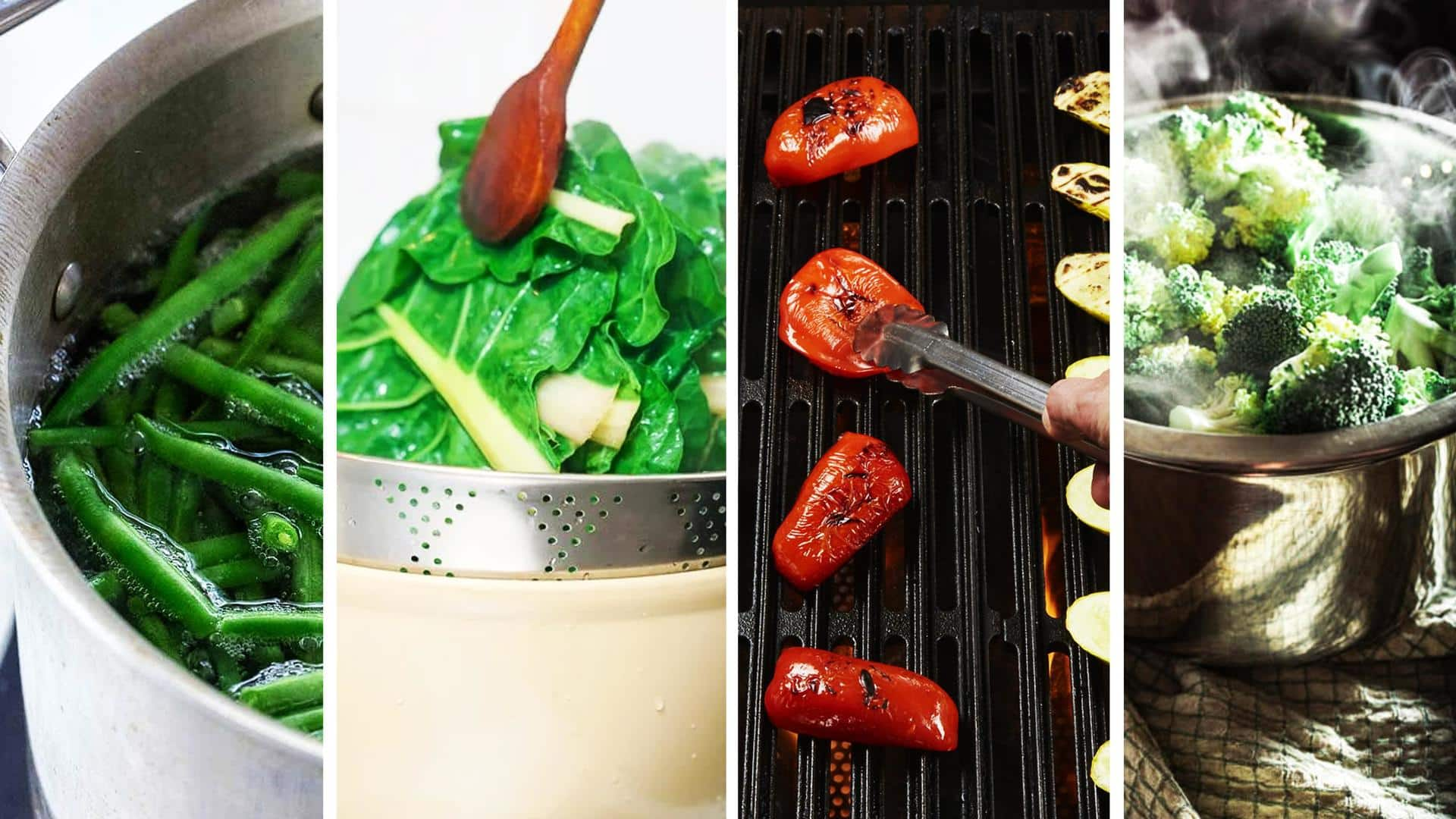
Boil, blanch, broil, steam, and poach: What's the difference?
What's the story
Let's learn the difference between some common cooking techniques. Cooking offers endless opportunities to prepare something innovative and delicious every day. And with that comes a host of culinary techniques that you can put to use to cook food that stands out in flavor and appeal. Here are some of the most common cooking methods and how they differ from one another.
Scalding
Blanching
Blanching means to make something white or extract colors. In this cooking method, the food is scalded in boiling water, removed after some time, and then plunged into iced water. Additionally, this method helps the food retain its nutritional quality over time. Boiled eggs, almonds, fruits, and vegetables are among the most common offerings that are blanched to cook a dish.
Bubbles
Boiling
When you boil something, you put it in a container filled with liquid and heat it. The liquid starts bubbling up and reaches the tip of the container. There are two variations to it - slow boil and rolling boil. The former is when you start cooking your food just when the water starts bubbling up. The latter is when it bubbles move aggressively.
Direct heat
Broiling
Broiling is a cooking technique that involves exposing food to direct heat. It is usually performed in an oven where the dish is placed closer to the source of heat. This process is generally used for thin and lean cuts of meat and vegetables. This technique retains the original color of the food item and adds a crispy texture to it.
Healthy
Poaching
Poaching means cooking in hot but not boiling liquid. It is a gentle technique to cook delicate foods like fish and eggs by submerging them in a liquid like water, vegetable stock, wine, or milk. This method is often considered healthy because it requires no fat. There are two variations - shallow and deep poaching where foods are partially or fully submerged respectively.
No direct heat
Steaming
When you want to retain the moisture of the food, you steam it. Despite using a lot of heat, steaming is a gentle cooking process as the heat doesn't reach the food directly. To perform this technique, place a dish inside a steaming pot and then cover it with a lid. Momos, dumplings, idlis, etc are some common offerings that are steamed.